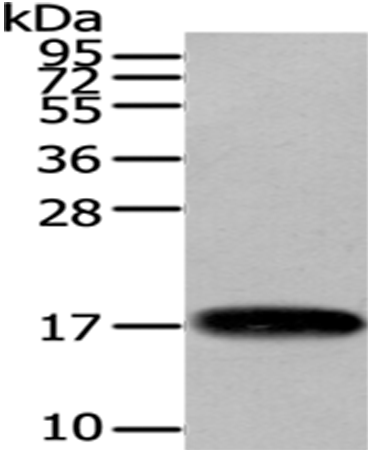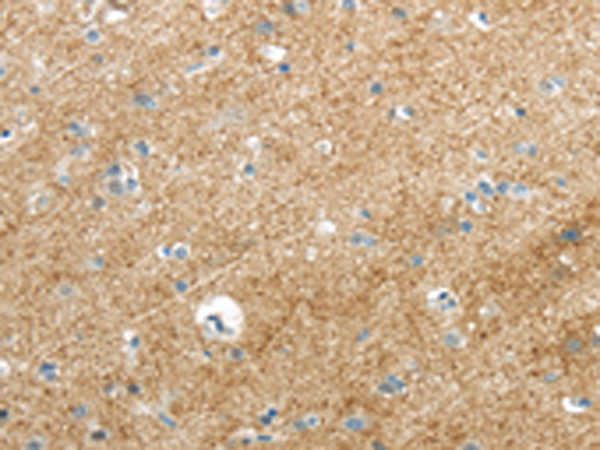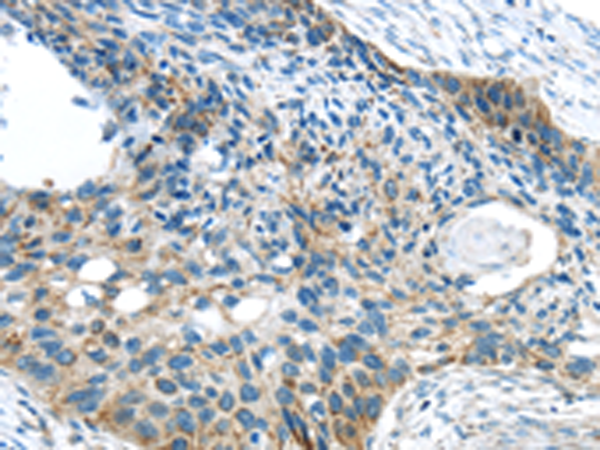


| WB | 咨询技术 | Human,Mouse,Rat |
| IF | 咨询技术 | Human,Mouse,Rat |
| IHC | 1/25-1/50 | Human,Mouse,Rat |
| ICC | 技术咨询 | Human,Mouse,Rat |
| FCM | 咨询技术 | Human,Mouse,Rat |
| Elisa | 1/2000-1/5000 | Human,Mouse,Rat |
| Aliases | SYB1; SPAX1; VAMP-1 |
| WB Predicted band size | 13 kDa |
| Host/Isotype | Rabbit IgG |
| Antibody Type | Primary antibody |
| Storage | Store at 4°C short term. Aliquot and store at -20°C long term. Avoid freeze/thaw cycles. |
| Species Reactivity | Human, Mouse, Rat |
| Immunogen | Synthetic peptide of human VAMP1 |
| Formulation | Purified antibody in PBS with 0.05% sodium azide and 50% glycerol. |
+ +
以下是关于VAMP1抗体的3篇代表性文献的简要概括(文献信息为示例性整理,具体引用请核对原文):
1. **"Characterization of a monoclonal antibody specific for VAMP1 in synaptic vesicles"**
*作者:Takamori S, et al.*
摘要:本研究开发了一种特异性识别VAMP1的单克隆抗体,通过免疫印迹和免疫组化验证其与VAMP1的结合能力,发现其不与其他VAMP家族蛋白交叉反应,适用于突触囊泡的定位研究。
2. **"VAMP1 regulates exocytosis in hippocampal neurons via SNARE complex assembly"**
*作者:Schoch S, et al.*
摘要:利用VAMP1抗体阻断实验,证明VAMP1在海马神经元递质释放中的关键作用,并揭示其通过调控SNARE复合体形成影响突触传递效率。
3. **"Altered VAMP1 expression in Parkinson's disease models"**
*作者:Garcia-Reitböck P, et al.*
摘要:通过免疫印迹和免疫荧光技术,发现帕金森病小鼠模型中VAMP1蛋白表达显著下降,提示其与突触功能障碍相关,抗体特异性经基因敲除实验验证。
---
**注**:以上文献为领域内典型研究方向示例,实际引用时建议通过PubMed或Web of Science以“VAMP1 antibody”为关键词检索最新研究,并优先选择高被引或权威期刊论文。部分经典研究可能涉及VAMP1功能机制而非直接抗体开发。
**Background of VAMP1 Antibody**
Vesicle-associated membrane protein 1 (VAMP1), also known as synaptobrevin-1. is a member of the SNARE (soluble N-ethylmaleimide-sensitive factor attachment protein receptor) family. It plays a critical role in synaptic vesicle fusion and neurotransmitter release by mediating the docking and fusion of synaptic vesicles to the presynaptic membrane. VAMP1 is predominantly expressed in neurons and neuroendocrine cells, where it interacts with syntaxin and SNAP-25 to form the SNARE complex essential for exocytosis.
VAMP1 antibodies are immunological tools designed to detect and study the expression, localization, and function of VAMP1 in biological samples. These antibodies are widely used in techniques such as Western blotting, immunohistochemistry (IHC), immunofluorescence (IF), and immunoprecipitation (IP) to investigate synaptic transmission mechanisms, neuronal development, and disorders linked to synaptic dysfunction. For instance, altered VAMP1 levels or mutations have been implicated in neurological conditions like epilepsy, autism spectrum disorders, and certain neurodegenerative diseases.
Validated for specificity and sensitivity, VAMP1 antibodies often target conserved regions of the protein (e.g., the N- or C-terminal domains) and are tested across species, including human, mouse, and rat. Researchers rely on these antibodies to explore molecular pathways in both normal physiology and disease models, aiding in the development of therapeutic strategies targeting synaptic vesicle dynamics.
×